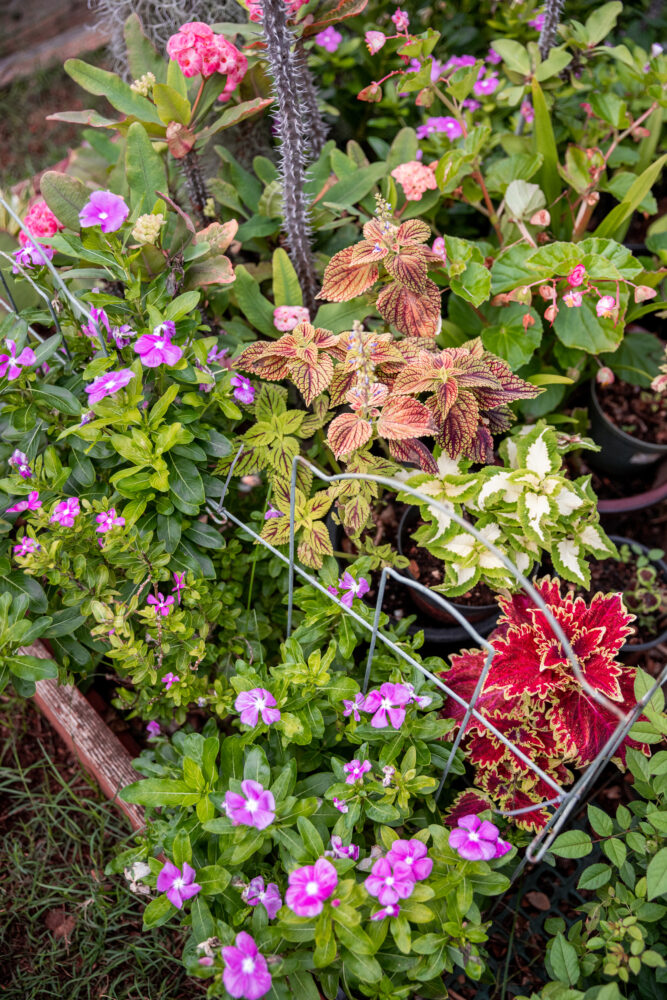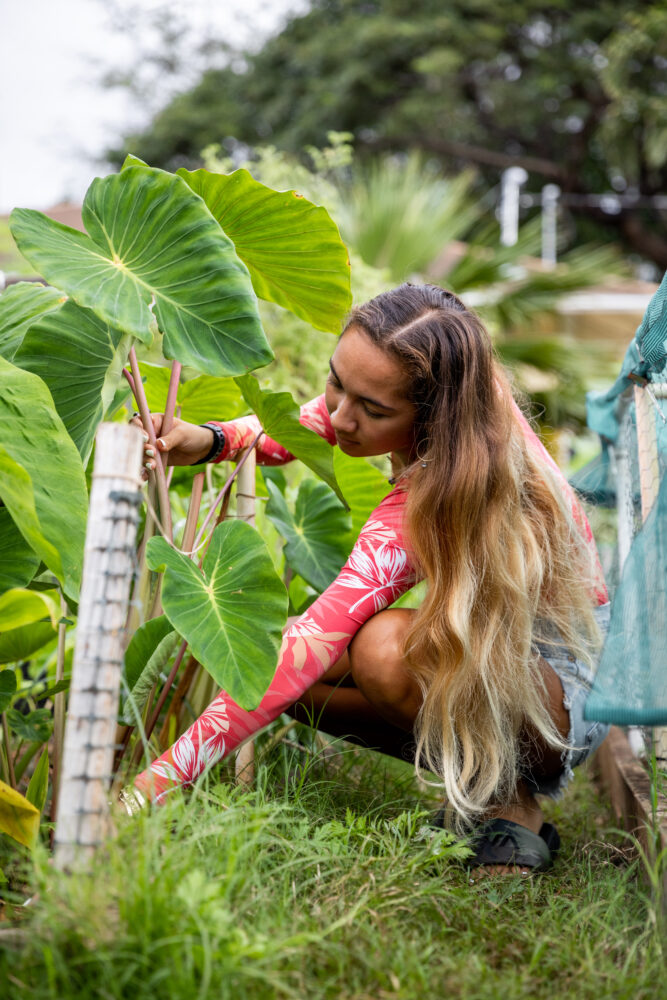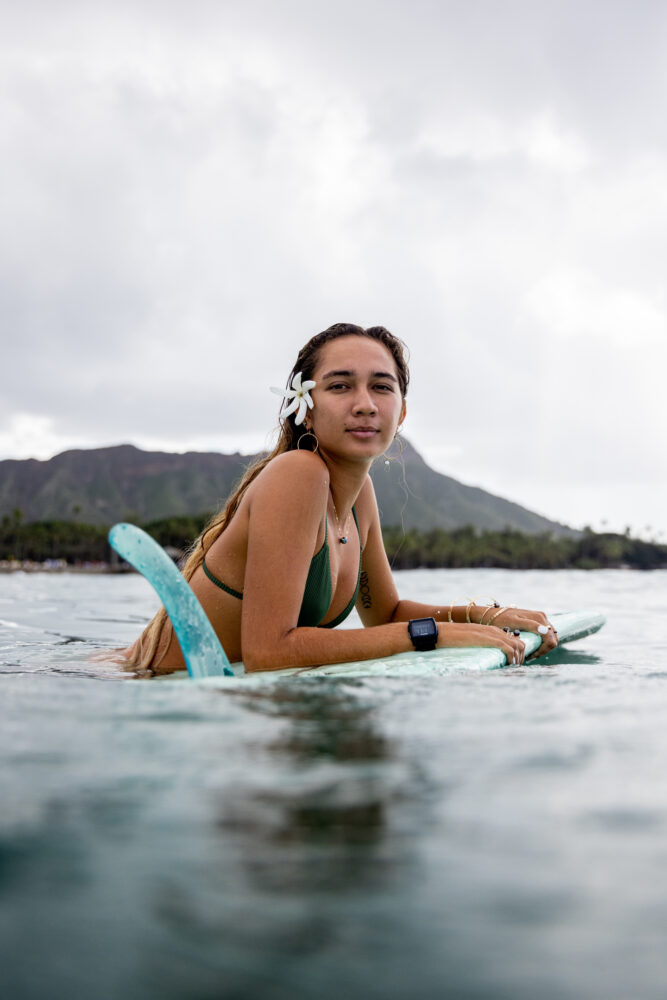E heluhelu ma ka ʻōlelo Hawaiʻi (Read in Hawaiian)
The Native Hawaiian surfing prodigy’s kuleana to caring for Hawai‘i extends from mauka to makai.
Images by Matt Heirakuji
Edited by N. Ha‘alilio Solomon
English translation by Nāinoa Alefaio
Under the shade of Diamond Head at Kapiʻolani Park, I met with Kelis Kaleopaʻa. The 18-year-old surfer is a child of the crashing waves of Kalehuawehe, and the lands of Waikīkī, where she was born and raised by the ancestors of that place. Since her early childhood, she has been a surfer of sandy Waikīkī, where Kaleopaʻa learned surfing. Last year, she became the women’s champion of the 2022 Vans US Open of Surfing in the longboarding division. However, before she became one of Hawaiʻi’s top worldwide surfing competitors, the cornerstones of her foundation were set here in Oʻahualua.
From kindergarten to the fourth grade, Kaleopa‘a attended the Hawaiian-language immersion school Kula Kaiapuni ‘O Ānuenue. With a glance to the side, we could see the beauty of Pālolo from the park where we met and to the other side we saw the waves of Waikīkī crashing. That is how the path of Kaleopaʻa’s childhood looked, from Pālolo of the kilikilihune rains to the sea at Waikīkī wafting in the līpoa-scented breeze. After the fourth grade until her graduation, she was educated from her family home, due to her busy surf competition schedule.


Kaleopaʻa started to compete in surfing competitions in her childhood. Surfing was and still is what she does everyday — that is how surfing became a career that she would be able to continue into her young adulthood. In some ways, she wanted to remain at Ānuenue, but there was a value to her surfing and the life it would give her. Kaleopaʻa’s graduation from high school coincided with the year she emerged from the sea adorned in the laurels of victory at the US Open. These days, Kaleopaʻa is continuing to strengthen her surfing, staying on the right path to attempt and succeed at the world championship competition later this year, and perhaps there is a different value to that as well.
Something to be proud of is surfing under the Hawaiian flag. This is what Kaleopaʻa and most surfers from Hawaiʻi do. With Hawaiian blood, or without Hawaiian blood, the number of surfers surfing under the Hawaiian flag continues to increase. During our conversation, the thought came up of flying the Hawaiian flag all over the world at different competitions and events related to surfing, to be a reminder of the origins of surfing and the people who popularized the sport. It might be a small action to some, but it is important to show pride in the land that you love to worldwide audiences and show them the continued strength of Hawaiʻi’s people.
And what a truly beautiful thing it is to see a winner’s podium full of Native Hawaiians, which is exactly how it was at the WSL US Open when Kaleopaʻa’s victory was announced. Three of the four finalists of the competition were natives of Hawaiʻi. The podium was shared with Kaniela Stewart and Honolua Blomfield, all of them competing under the Hawaiian flag.
Aloha ʻāina is an important part of Kaleopaʻa’s life, and surfing under the Hawaiian flag is one way to express aloha ʻāina to the world. Kaleopaʻa said she saw aloha ʻāina prominently during the Covid-19 pandemic. Visitors weren’t allowed to come to the islands for a few months. “That was the first time I saw Waikīkī without tourists,” she says. Only Oʻahu’s inhabitants enjoyed Waikīkī. During that time Kaleopaʻa saw the aloha ʻāina between local folks that were able to return to Waikīkī’s beaches, showing reciprocal kindness between people, and exemplifying the traditional values that make Hawaiians Hawaiian. That exchange of aloha is the main thing that Kaleopaʻa carries on the journey of her life, along with her fascinating practice of Hawaiʻi: surfing.
Aloha ʻāina is the Hawaiian people’s central ideology. There are many ways to express aloha ʻāina. For Kaleopaʻa it is surfing and taking care of the families and land of Waikīkī.
Let us thank and celebrate the Saxman and Kaleopaʻa families for raising and bringing up Kaleopaʻa. She is grateful to all the ancestors and families of Waikīkī for teaching surfing to the generations that are eager to learn. When the surfers of Hawaiʻi travel to foreign lands, they bring with them the aloha of the land and kindness of these islands to share their positivity with the people of the world. “People from California and Mexico always tell us how kind and gentle the Hawaiian surfers are when we visit,” she explains.
It is known, Hawaiʻi is special when it comes to hospitality, and it is a normal thing for Hawaiians to invite people to visit, enjoy, and relax in aloha. For the Kaleopaʻa family, it is part of their heritage to be hospitable hosts to visitors of Waikīkī, as the famous Beach Boys. The Beach Boys were the people that took care of the land and seas of Waikīkī, and they were famous for their love of hosting visitors at the beach. They were the ones that taught visitors to surf.

But today the Beach Boys are no longer operating directly on Waikīkī Beach in the location they once used to for generations, replaced by a different company. When the beach lost its boys, it may too have lost the kind of hospitality the Beach Boys offered with open hearts, the responsibility now lies on the shoulders of Kaleopaʻa and her peers, they will be the ones to continue this great Hawaiian practice of hosting visitors with aloha.
Aloha ʻāina is the Hawaiian people’s central ideology. There are many ways to express aloha ʻāina. For Kaleopaʻa it is surfing and taking care of the families and land of Waikīkī. It is important to show different ways of being Hawaiian and their conscience of aloha ʻāina. In reciprocal aloha, that is where we express the truth of Hawaiʻi’s people to the world. That is what Kaleopaʻa strives to do, and what we should try to do as well.
This story is part of Flux Hawaii’s Hawaiian-language reporting series featuring articles produced all in ‘ōlelo Hawai‘i. This series, in partnership with Kīnā‘ole Foundation, features the next generation of Native Hawaiians carrying on their ancestral traditions and returning aloha to the world.


